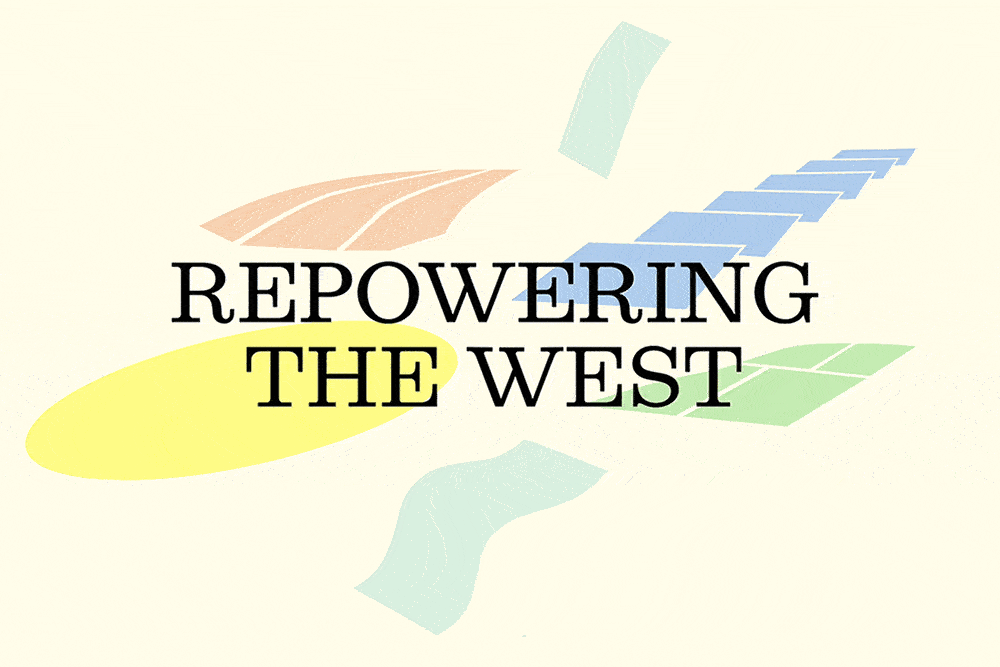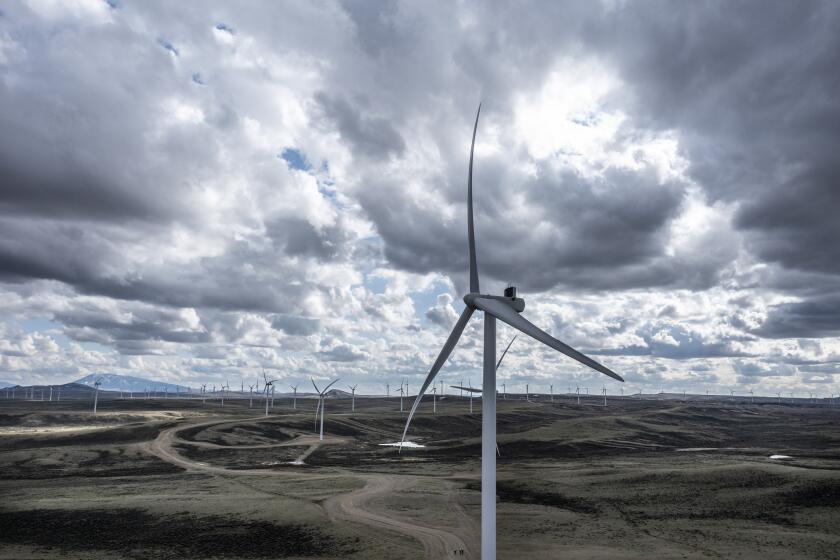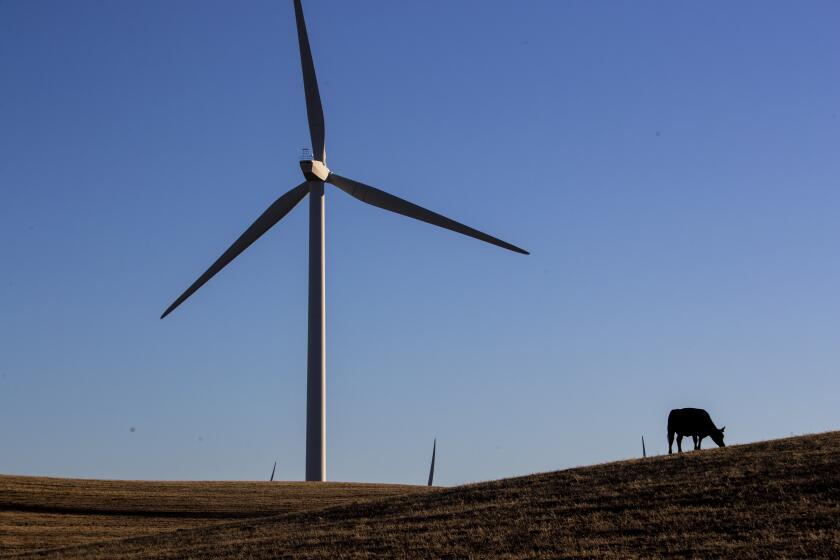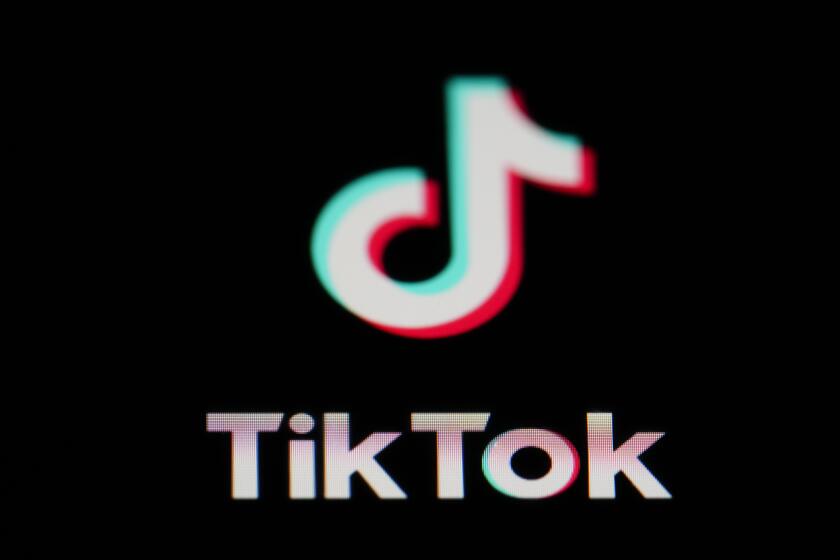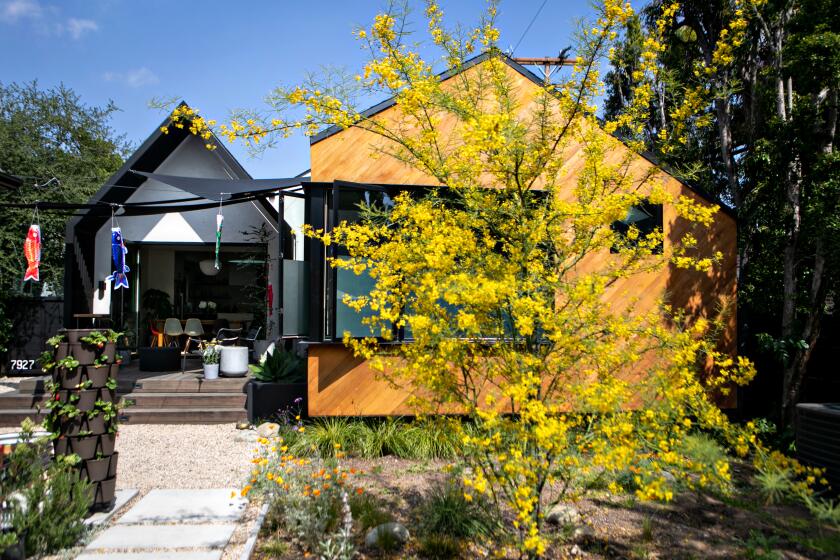How hard is it to develop California’s electric grid of the future? Like repairing a car while driving
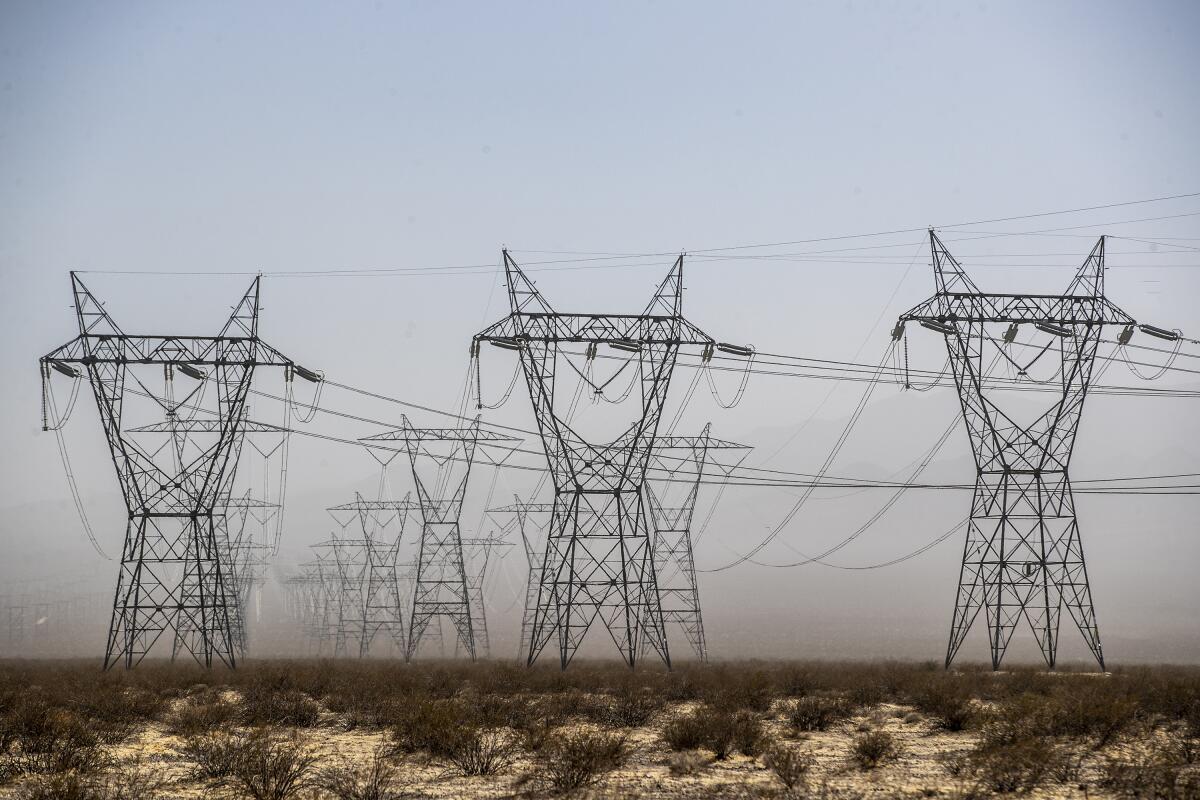
- Share via
The chief operating officer for the California Independent System Operator — which manages the electric grid for about 80% of the state — says California’s ambitious clean energy goals can be reached. But he also warns there will be plenty of bumps on the road.
“I’m optimistic because I’m starting to see coordinated, strategic thinking at various levels about the challenge,” said Mark Rothleder, COO and senior vice president at the system operator.
State policymakers want California’s power system to rely on 100% carbon-free sources by 2045 — if not sooner — and make sure the lights come on whenever customers flip a switch, while also keeping rising utility rates from reaching eye-watering levels for many consumers.
In an interview, Rothleder said he’s under no illusions that remodeling a grid that drives the fifth-largest economy in the world will be easy.
California has recently demonstrated it can run its grid from clean energy sources for short periods of time.
Wind turbines, solar panels and power lines are needed to confront climate change. But they’re also reshaping the West — and not always for the better.
“The question is now,” Rothleder said, “how do you do that with a set of resources for 8,760 hours out of the year” — meaning 24 hours a day for 365 days — “not just a few targeted hours when you have low load and favorable conditions.”
One big challenge is developing thousands of megawatts of renewable energy resources and incorporating them into the electric grid. California’s current 50-gigawatt power system needs to expand to 120 gigawatts to include all the carbon-free resources needed to meet the state’s 2045 target.
The California Independent System Operator says 7 gigawatts (or 7,000 megawatts) of clean power needs to be added every year for the next two decades. And those additional resources must be integrated while the electric grid keeps delivering power.
One of Rothleder’s colleagues likened the job to taking a car and making a major repair — such as replacing the engine and changing the tires — without stopping the vehicle.
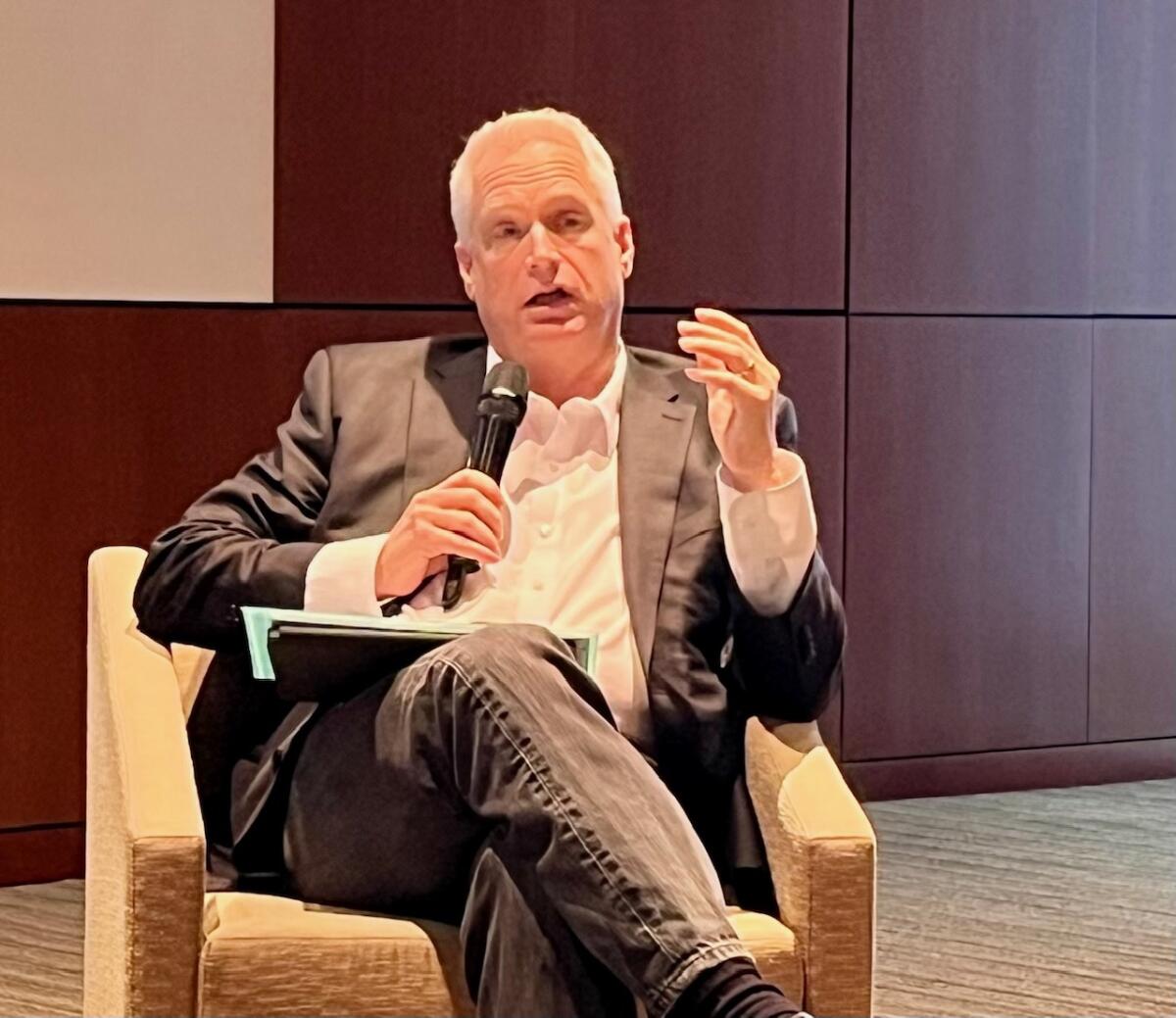
“We can’t just shut down the system and stop energy flow while we do this transformation,” Rothleder said. “We’ve got to keep the car running.”
Hurdles to clear
Another challenge? Coordinating all the cleaner resources while keeping the system reliable.
Natural gas makes up the largest single source of California’s power, but it is a fossil fuel. In the California Energy Commission’s most recent tabulation, natural gas accounted for 47.46% of in-state generation in 2022.
“Frankly, we still need some of those gas resources around for a while longer, while we get those [cleaner] technologies in place,” Rothleder said. “We’re using [natural gas plants] less and less, which is good, but having that capability and using them when you need them is still an important operational” priority.
The agency added 5,660 megawatts of new power onto the grid last year, and in the next six to eight months of 2024, a little more than 1,100 additional megawatts are scheduled to go into commercial operation.
Billionaire Phil Anschutz — who owns the Coachella music festival, the Los Angeles Kings hockey team and L.A.’s Crypto.com Arena — is preparing to build the nation’s largest wind farm. We traveled the route.
Battery storage is one of the state’s largest growth areas, increasing 30-fold to almost 7,200 megawatts in the space of three years. Batteries are considered crucial because wind and solar production is intermittent.
Solar production may be abundant during the day but practically vanishes after sunset or when smoke and clouds obscure the skies. And when the wind doesn’t blow, production from wind farms peters out. Battery storage can fill in the gaps.
For example, storage can soak up excess power generated by solar during the day and discharge the electricity later, especially from 4 to 9 p.m. when California’s grid is under the most stress.
Coordinating all the resources is imperative for grid operators.
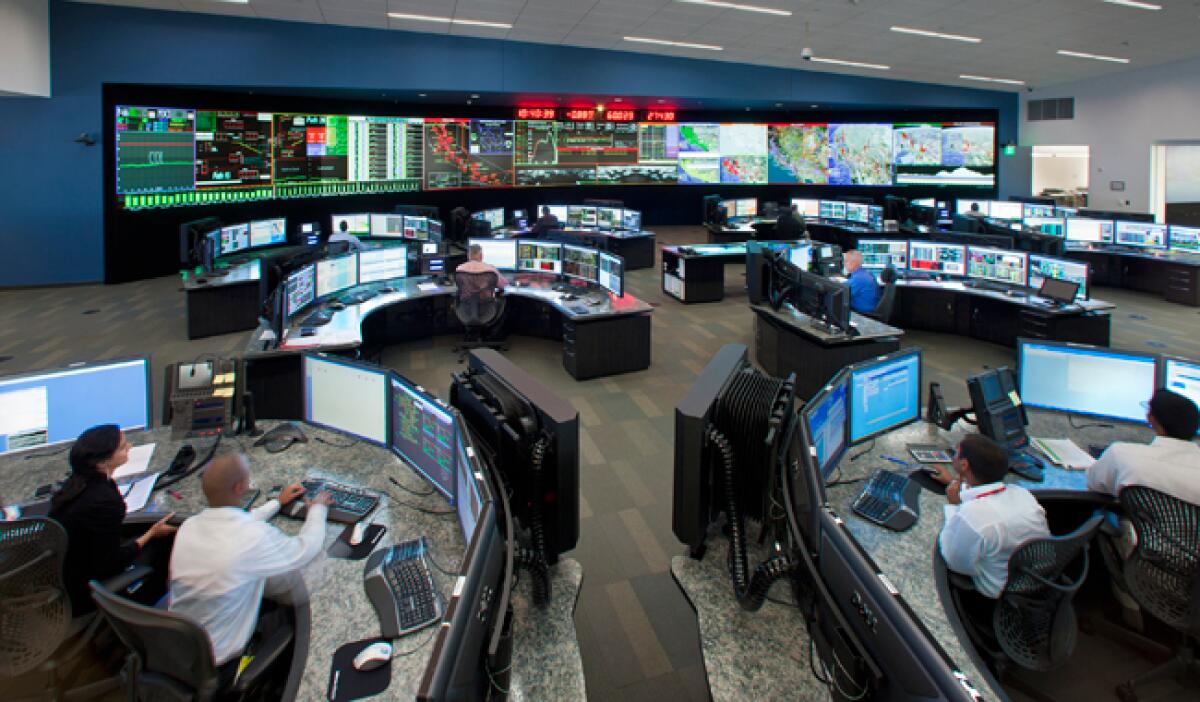
“I don’t get any slack in not being able to meet the demand” from electricity customers, Rothleder said. “And reliability is Job 1. ... Their expectation is, ‘Any time I need it, I want to be able to use it.’ ”
In the coming years, California is counting on major contributions to its electric grid from floating offshore wind projects.
Energy officials expect wind farms planned off the coast of Northern and Central California to generate as much as 5 gigawatts of power by 2030 and 25 gigawatts by 2045. For perspective, the Diablo Canyon nuclear plant in San Luis Obispo produces 2.2 gigawatts of capacity, which accounts for about 9% of the state’s power mix each year.
Whereas the first offshore wind project in New York came online last month, the industry has seen other projects postponed or even canceled because of higher interest rates that have increased financial costs and inflation that has driven up prices for turbines, steel and labor.
A new study compares the environmental harm from renewable energy and oil drilling.
The system operator last year offered a peek into what it imagines the state’s grid will look like when it unveiled its first 20-year outlook.
The largest single resource addition is projected to come from 53,212 megawatts of utility-scale solar. But adding that amount will take up a lot of space.
The outlook’s appendix estimated that 53,212 megawatts of solar capacity would require using more than 372,000 acres of land. For perspective, that’s about enough to cover Lake Tahoe three times. (Lake Tahoe’s surface area takes up 122,200 acres.)
Getting it done ... and at what price?
Rothleder said integrating all the different energy sources into the grid cannot be done in isolation.
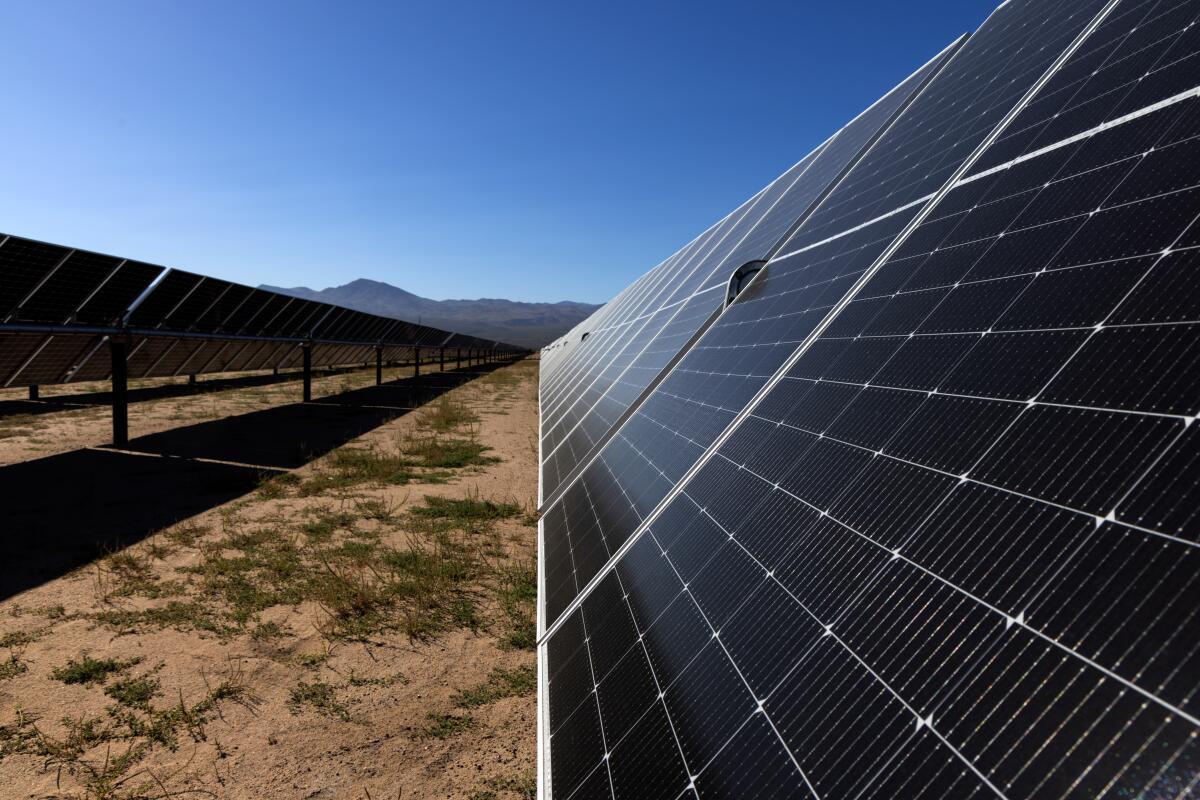
“If you can do this strategically, holistically and we can all work together, I am confident there are solutions,” he said. “They may not be cheap solutions, but there are solutions. And then the challenge is how do you do this reliably, affordably and at the right pace and the right sequence to minimize the bumps in the road?”
Affordability is a major concern, with utility customers across California seeing monthly bills rising at a relentless pace.
Switching to a system that’s much more reliant on electricity infrastructure has critics of the state’s energy transition predicting that costs will keep spiraling upward. The system operator’s 20-year outlook, with its projected portfolio of significantly more renewable energy sources, estimated a price tag of about $30.5 billion in transmission costs alone.
Rate-setting is out of the purview of the grid operator, but Rothleder suggests looking at rates and costs more broadly, to include a household’s entire energy footprint — not just utility bills, but transportation costs that consumers pay as well.
“If your electricity bill goes up, but your gasoline bill goes down because you’ve converted your car from gasoline to electricity, what’s the entire energy bill cost for a consumer in California? I think you may get a different picture about that,” Rothleder said.
San Diego Gas & Electric last year released a “Path to Net Zero” study that looked ahead to 2045 and came to a similar conclusion.
The report predicted SDG&E electric and natural gas bills will be higher in constant dollars in 2045 than 2022. But homeowners who electrify will see a dramatic reduction in what they spend on gasoline, and the overall savings at the pump will largely offset the higher utility bills.
“It probably would be helpful to explain that to the public,” Rothleder said, and tell people “what to expect along the way so that they’re not shocked — or if they are shocked, they at least understand what’s happening, why it is happening and what the trade-offs are.”
The threat of blackouts
Last year went relatively smoothly for California’s grid, largely because of moderate weather and a wet winter that boosted generation from hydroelectric facilities.
The system operator did not have to issue a single Flex Alert — a request for utility customers across the state to voluntarily reduce consumption in the late afternoon and early evening hours, usually during the summer when millions of people crank up their air conditioners and put the grid under strain.
But things were much different in previous years. In August 2020, a “heat dome” that settled over nearly all of California led to two consecutive days of rotating power outages that caused some areas to go without electricity for up to 2½ hours. The Golden State narrowly avoided a repeat in 2021, and in 2022 the grid operator issued a record 10 straight days of Flex Alerts.
“We’ve tried to build enough redundancy in place and there’s a timing and sequence thing that you have to work out,” Rothleder said. “We bring on new resources with new capabilities in a certain time frame and we have to do this before we retire other resources that we’re relying on. And maybe [it’s advisable to have] a one- to two-year overlap so that we get secure on those new resources with the new capability before we let the old resources go.”
The state’s grid operator normally imports about one-quarter of its power needs from neighboring states.
The agency is one of the members of the Western Energy Imbalance Market, which covers about 80% of energy demand in the region. Working with 22 system operators in 11 states across the West, the WEIM uses sophisticated technology to find and deliver energy to members at low costs and in real time.
Since its inception in 2014, the WEIM reports, it has produced more than $1.7 billion in benefits and savings to California consumers.
The system operator is also working with other stakeholders to establish an extended day-ahead electricity market called EDAM that aims to take the success of WEIM and expand it over a broader geographic footprint. A few days before Christmas, the Federal Energy Regulatory Commission gave the OK to many of the provisions that will launch the extended day-ahead market in 2026.
“That is a huge benefit,” Rothleder said. “Again, not a single solution but part of the mix of tools you’d want in a comprehensive solution.”
Although the balancing act can be daunting, Rothleder thinks California’s grid of the future can be more reliable and resilient than the current system.
“If done correctly, you will have a lot more tools,” he said.
Rather than relying on a few big power plants generating most of the state’s electricity, the power system would be supplied by multiple sources.
“Think about it,” Rothleder said. “If you lose a large nuclear plant, that’s 2,000 megawatts, all at once,” that could go offline from the grid.
“If you have this distributed over multiple smaller amounts of resources, your ability to absorb some of those losses is much greater because it’s not as big a chunk. So I really do think in the long run, we will have a more reliable system out of this. But it has to be thoughtfully designed to achieve that.”
In 20 years or so, Californians will know how things work out.
Nikolewski writes for the San Diego Union-Tribune.
More to Read
Inside the business of entertainment
The Wide Shot brings you news, analysis and insights on everything from streaming wars to production — and what it all means for the future.
You may occasionally receive promotional content from the Los Angeles Times.
